The Top 10 Most Valuable Crops Harvested in Montana
Montana takes a leading role in the nation for its production of wheat, lentils, and flaxseed. The agricultural endeavors of the Treasure State don’t just stop at the farm gate; they echo through the economy, contributing an average of $4 to $5 billion annually. It’s a testimony to the rich, fertile soils and, of course, the hardworking farmers.
As we gaze at the vast fields stretching under the big sky, a variety of valuable crops come into view. Here are the top 10 most valuable crops harvested in Montana. Not only do these crops adorn our dinner tables, but they also significantly impact the state’s economic vitality.
Disclaimer: All figures presented are based on the data provided by USDA/NASS (USDA – National Agricultural Statistics Service) and are accurate for 2022/2023. However, we recommend readers to refer to USDA/NASS for the most up-to-date information!
1. Wheat – $1,329,780,000
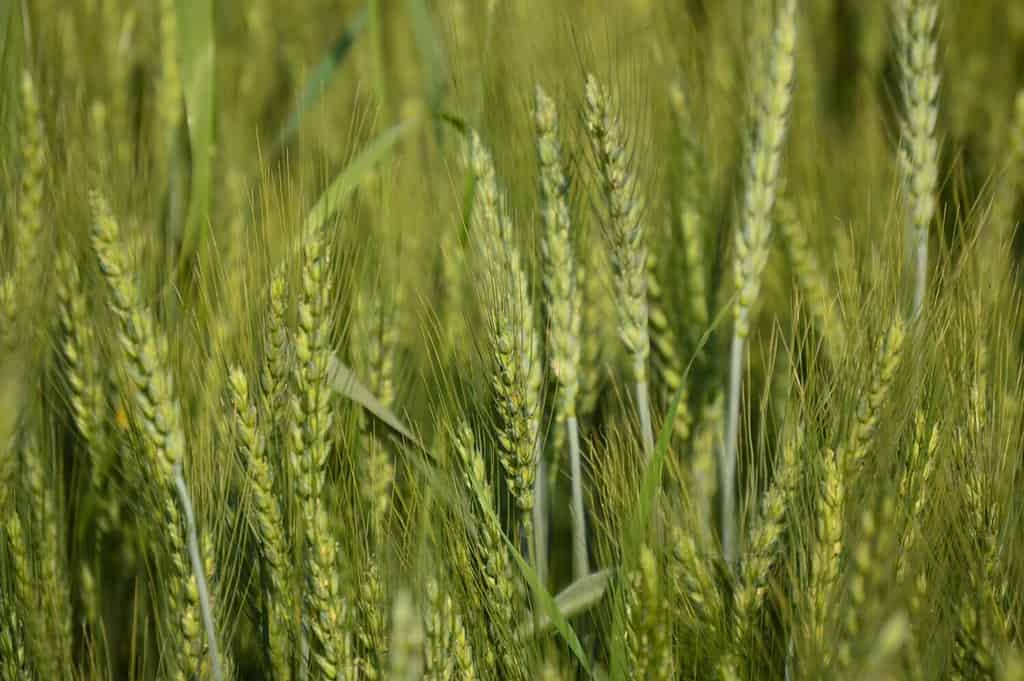
©Khawaja gulam fareed/Shutterstock.com
In the world of valuable crops in Montana, wheat tops the list. Remarkably, in 2022, Montana clinched the fourth position among the largest wheat producers nationwide.
Wheat, a type of grass, is largely grown for its seeds, which are harvested as cereal grains and form a basic food item around the world. It belongs to the genus Triticum with various species, among which common wheat is predominant.
The journey of wheat cultivation in Montana dates back to the times of early settlers moving westward. Today, almost every county in Montana has fields of golden wheat, which spread across more than 8,950 farms. However, the epicenter of wheat production lies in the north-central region, known as the “Triangle Area.”
Once the harvest season concludes, a major chunk of the wheat, about 80%, finds its way to international markets while the rest, 20%, remains within the country.
In 2022, the monetary value of wheat production in Montana soared to $1,329,780,000, equivalent to 139.3 million BU or bushels.
Fast forward to 2023, the wheat growers in Montana had a reason to celebrate as the production figures saw a positive turn, recovering from the dry spells. This year, the total wheat production in Montana is expected to reach 186.71 million BU. It is a 34 percent increase from the previous year and an impressive 85 percent rise from 2021.
2. Hay – $976,136,000
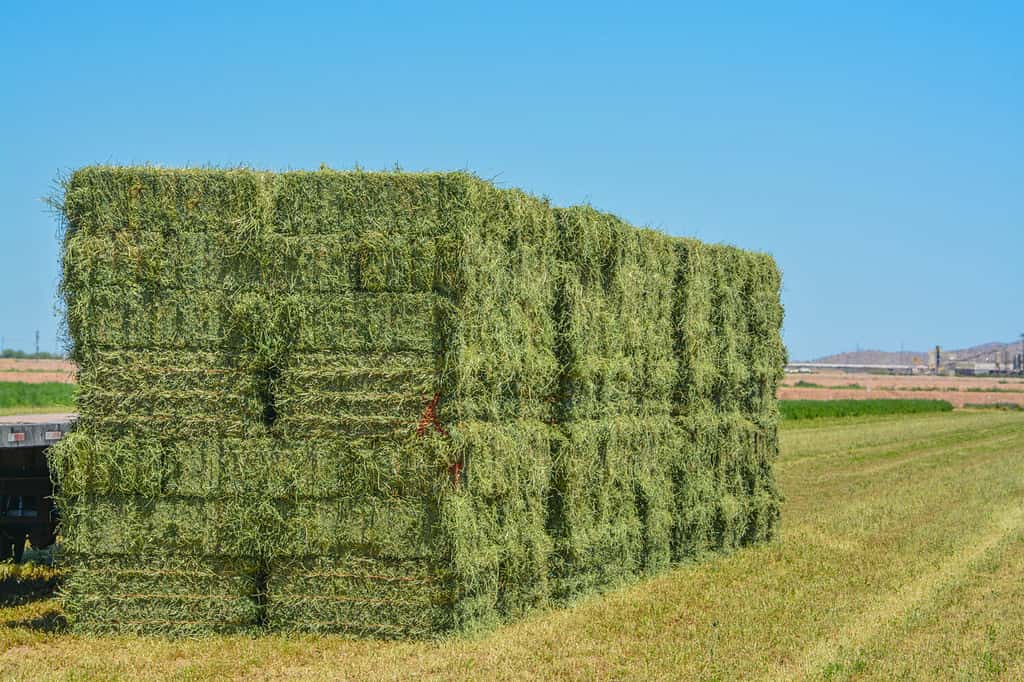
©Norm Lane/Shutterstock.com
Securing the spot of the second most valuable crop in Montana is hay. Montana, with its blend of rain and irrigation systems, presents an ideal setting for hay cultivation.
In the agricultural domain, hay refers to dried grasses and other plant material utilized as feed for animals. Typically, farmers cut the green foliage directly from the field and leave it there to dry or mechanically dry it using heated air.
Central Montana is the hub of hay production in the state, although substantial amounts are also cultivated in the southwestern and south-central regions. It’s common practice among ranchers to grow their own hay for personal use.
In 2022, the hay market in Montana was bustling with a production value of $976,136,000, translating to a hefty 4,116,000 tons of crop.
As 2023 unfolds, the forecast is bright for hay cultivation. The area used for dry hay harvesting is projected at 2.65 million acres. Of this, alfalfa hay will cover 1.60 million acres, showing an expansion of 200,000 acres or 14 percent from the previous year. The remaining 1.05 million acres, an increase of 160,000 acres or 18 percent from last year, is set aside for other hay varieties.
This scenario would mark the largest area dedicated to other hay varieties since 2005.
3. Barley – $247,968,000
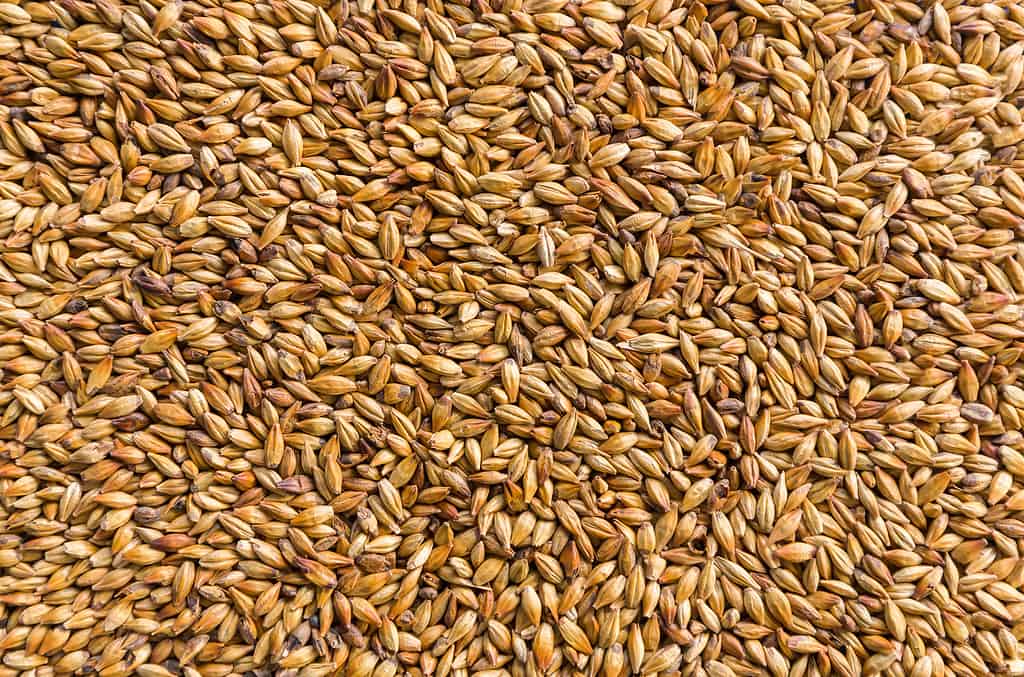
©Thiago Santos/iStock via Getty Images
Montana comes in at number one in the United States for barley-planted acreage,with a substantial 35.8 percent of the nation’s 3.05 million acres.
Barley is a versatile cereal grain that finds its way into a range of products. You can find this crop in bread, beverages, stews, and various other culinary delights. Globally, it stands fourth in the lineup of major grain crops, following wheat, rice, and corn. Its resilience makes it a suitable crop for Montana’s unique conditions characterized by cool temperatures, elevated terrains, and limited rainfall.
The town of Fairfield, Montana, nestled in Teton County, is known as the “Malting Barley Capital of the World.” The barley in the state mainly serves two primary purposes. It either becomes feed for livestock or is for malt for brewing beer. Furthermore, a smaller portion is for human consumption, enriching cereals and bread.
The year 2022 saw Montana’s barley market flourishing with a production value of $247,968,000, which equates to an impressive 34,850,000 BU.
As 2023 rolls in, the barley cultivation landscape in Montana exhibits a promising uptick. The planted barley area has expanded to 1.25 million acres, a notable increase of 220,000 acres or 21 percent from the last year, marking the most extensive barley cultivation stretch since 1998. The anticipated harvest area has also edged up to 845,000 acres, a slight rise of 5,000 acres from 2022.
4. Lentils – $128,561,000

©iStock.com/pawel_p
Montana is the largest lentil producer in the United States. In fact, its lentil farms contributing more than 38% of the nation’s lentil production.
Lentils belong to the pulse family, alongside beans, field peas, and chickpeas. The term “pulse” signifies the edible seeds harvested from legumes. Available in a range from extra-small to large sizes, lentils are famous and popular for their rich protein content, having been a staple in human diets for several centuries.
Their resilience to frost and drought makes lentils a well-suited crop for Montana’s varying climates. They are typically sowed in the cooler weather and exhibit rapid growth when temperatures escalate. Within the state, Sheridan County emerges as a major hub for lentil production.
In the year 2022, the monetary value of lentils produced in Montana stood at around $128.561 million, equivalent to roughly 4,005,000 CWT.
In 2023, the acreage used for lentil cultivation was reduced to 400,000 acres, marking a decrease of 100,000 acres compared to the previous year. The harvested area also shrunk to 360,000 acres, a drop from 450,000 acres in 2022.
5. Peas – $94,090,000

©Serg_Velusceac/iStock via Getty Images
Ranking fifth in the list of most valuable crops in Montana are peas. In this region, it’s a common practice for farmers to grow peas alongside small grains like oats or barley, with the mixed crops later harvested for hay. The main variety cultivated in Montana is the dry pea, also called field peas.
Although named peas, field peas are essentially beans, distinct from the familiar green garden peas. They share a close resemblance in taste and texture to blackeye peas, making them a perfect fit for soul food recipes. Dry peas are indeed a multipurpose crop, finding markets for both human consumption and livestock feed.
The success rate of seed germination sees an upswing with soil temperatures climbing above 55°F, yet when temperatures cross the 64°F mark, the germination rate tends to dip. Owing to these growth characteristics, Montana is among the leading pea-producing states in the U.S.
In the year 2022, Montana’s pea crop brought in around $94.09 million, which translates to approximately 7,128,000 CWT.
The year 2023 witnessed dry edible pea cultivation expanding to an estimated 590,000 acres, marking an increase of 55,000 acres from the previous year.
6. Corn – $56,414,000

©Maksymowicz/iStock via Getty Images
The primary purpose of corn cultivation in Montana is to feed livestock. The majority of the state’s corn production takes place in the south-central part of Montana.
Corn is a plant with large grains, or kernels, aligned in rows on a cob. With its diverse varieties, it yields a range of products that are highly prized for both human consumption and livestock feed.
In many regions within Montana, corn is a satisfactory feed crop. However, its cultivation can be risky due to late spring and early fall frosts. On the other hand, corn requires less equipment for production. And the labor needed comes at a convenient time after the harvest of other crops.
The year 2022 saw Montana producing corn valued at approximately $56.41 million, amounting to about 7,728,000 BU.
In 2023, Montana farmers allocated 115,000 acres for corn cultivation, with plans to harvest 59,000 acres for grain, a decline from the 69,000 acres harvested the previous year. This reflects a 14 percent drop in harvested grain acreage from last year and a 12 percent decrease in total acreage designated for corn cultivation.
7. Chickpeas – $45,324,000
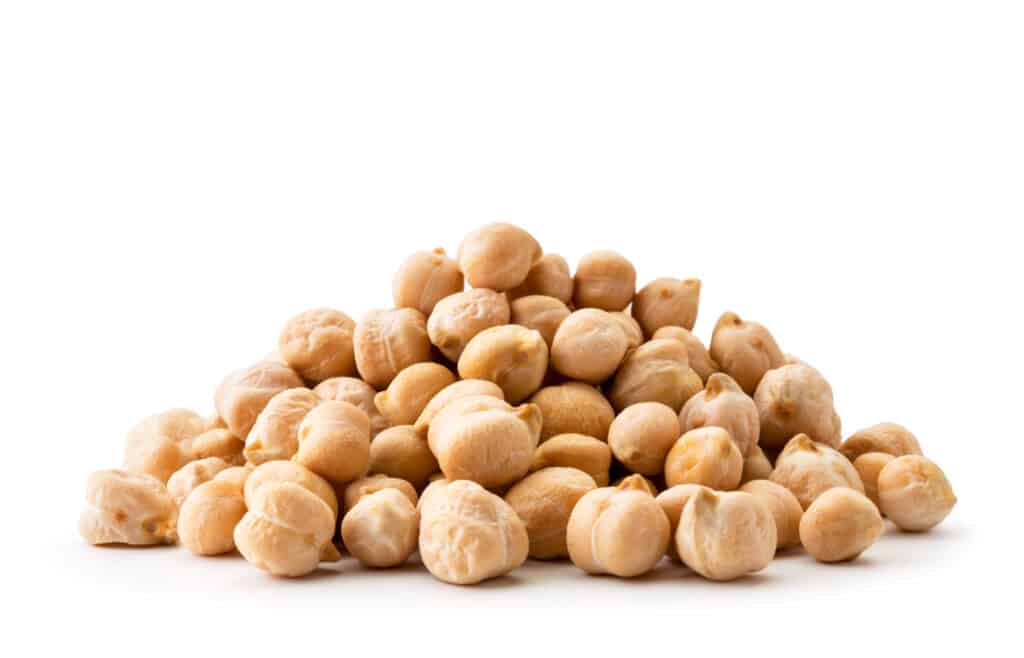
©innakreativ/Shutterstock.com
Chickpeas is a lucrative crop option for many of Montana’s dryland farming areas. Production hiccups in traditional cultivation regions have opened up favorable market avenues for Montana-grown chickpeas.
Belonging to the legume family, chickpeas are typically round and beige, although other variants come in black, green, or red. The plant is bushy with leaves resembling feathers or ferns, making it well-suited for Montana’s hot, dry summers.
Montana sees the cultivation of two chickpea varieties: Desi and Kabuli. Desi chickpeas, recognized by their purple flowers, yield small, dark seeds. On the other hand, Kabuli chickpeas have white flowers and yield larger, pale seeds, commonly referred to as garbanzo beans.
In 2022, chickpea production in Montana reached a value of approximately $45.324 million, equivalent to about 1,357,000 CWT.
In 2023, the total area dedicated to chickpea cultivation saw an increase to 205,000 acres, marking a 10% rise from the previous year. It’s anticipated that 194,500 acres will be harvested. Of this, small chickpeas occupy 50,000 acres, with an expected harvest of 47,500 acres. Large chickpeas are spread over 155,000 acres, with a projected harvest of 147,000 acres.
8. Canola – $44,817,000

©cherrydonut/Shutterstock.com
Securing the eighth position of the most valuable crops in Montana is canola, a crop that has been growing in Montana for over two decades.
Canola plants, stretching between three to five feet in height, produce pods that contain seeds. Upon harvesting and crushing, these seeds are transformed into canola oil and meal. Additionally, the small, yellow flowers produced by these plants add a touch of beauty to the surroundings.
The primary regions for spring canola cultivation within Montana are its cooler, small-grain growing areas located in the northern, northeastern, and central parts. Montana accounts for less than 5% of the nation’s total canola production – even though the state comes in at number three!
Last year, the canola production in Montana brought in approximately $44.817 million, translating to about 172,010,000 pounds.
In the year 2023, the area designated for growing canola is projected at 160,000 acres. This marks a decrease of 20,000 acres from the previous year. The expected harvest area stands at 150,000 acres, which is down from the 168,000 acres harvested in 2022.
9. Flaxseed – $18,581,000
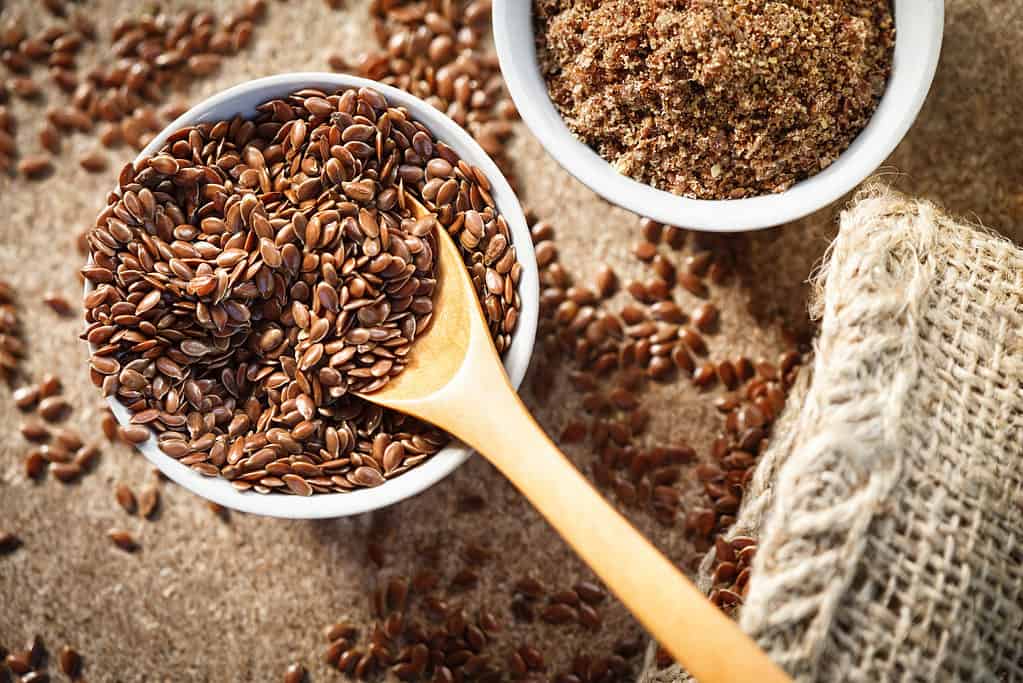
©iStock.com/panco971
Flaxseed is in the top 10 list of Montana’s most valuable crops. It is a fiber crop known for its rich content of beneficial omega-3 fatty acids and dietary fiber, making it a favored choice in modern nutrition.
In Montana, while not a mainstream crop, flaxseed finds its way into the fields of some farmers looking to diversify their crop rotations. While the fibers of flax are utilized in crafting linen and rope, the primary focus in Montana is on cultivating flax for its seeds.
In 2022, the production value of flaxseed in Montana stood at around $18.581 million, amounting to approximately 902,000 bushels.
The area dedicated to flaxseed cultivation witnessed a significant reduction to 40,000 acres. This is a drop of 58,000 acres compared to the previous year. Similarly, the expected harvest area is set at 37,000 acres, showing a decline of 45,000 acres from the last year.
10. Oats – $7,068,000
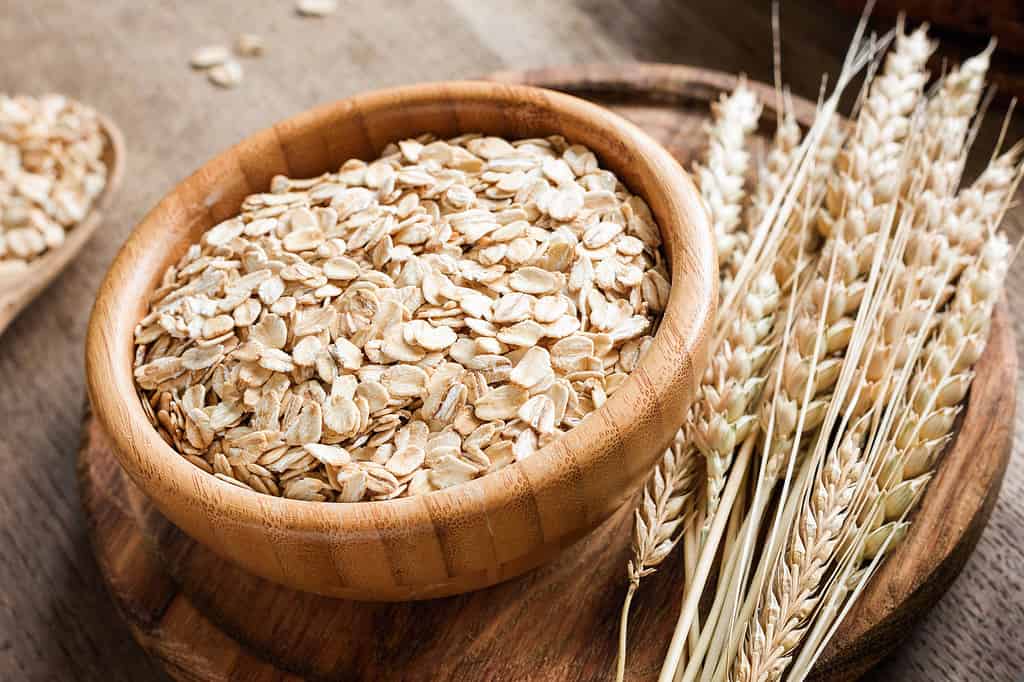
©Arx0nt/iStock via Getty Images
Rounding off the list of the most valuable crops in Montana are oats. Oats are a crop cultivated in the state both as an annual forage and as a feed grain for livestock. They find their use in dietary preparations for dairy cattle, sheep, horses, and young growing animals, often substituting for corn in Montana.
Oats belong to the cereal grain category, with the term specifically referring to the edible seeds of oat grass.
In 2022, the oat production in Montana was valued at around $7.07 million, equating to about 912,000 bushels.
In 2023, the area sown with oat seeds stands at 75,000 acres, showcasing a 12 percent reduction from the last year. On the flip side, the area anticipated for grain harvest is 30,000 acres, marking a 25 percent increase, or an additional 6,000 acres, compared to 2022.
Summary of Montana’s Top 10 Most Valuable Crops
| Rank | Crop | Value (2022) |
|---|---|---|
| 1 | Wheat | $1,329,780,000 |
| 2 | Hay | $976,136,000 |
| 3 | Barley | $247,968,000 |
| 4 | Lentils | $128,561,000 |
| 5 | Peas | $94,090,000 |
| 6 | Corn | $56,414,000 |
| 7 | Chickpeas | $45,324,000 |
| 8 | Canola | $44,817,000 |
| 9 | Flaxseed | $18,581,000 |
| 10 | Oats | $7,068,000 |









